If your Mercedes is showing the dreaded “ESP Inoperative” message, it’s crucial not to ignore it. Your Electronic Stability Program (ESP) plays a vital role in ensuring your vehicle’s stability and safety.
This warning could indicate issues with your vehicle’s traction control system, anti-lock brakes, or other safety features. The “ESP Inoperative” message in a Mercedes indicates a fault or malfunction in the ESP system.
The ESP is a safety feature that helps maintain vehicle stability by detecting and reducing skidding or loss of traction. When the ESP system is inoperative, this safety feature may not function as intended, potentially compromising vehicle stability during certain driving conditions.
In this post, we will delve into the common causes of ESP inoperative Mercedes messages and provide hints on what you can do to troubleshoot the issue. Don’t let a malfunctioning ESP compromise your driving experience—read on to learn how to address this warning and keep your Mercedes running smoothly and safely.
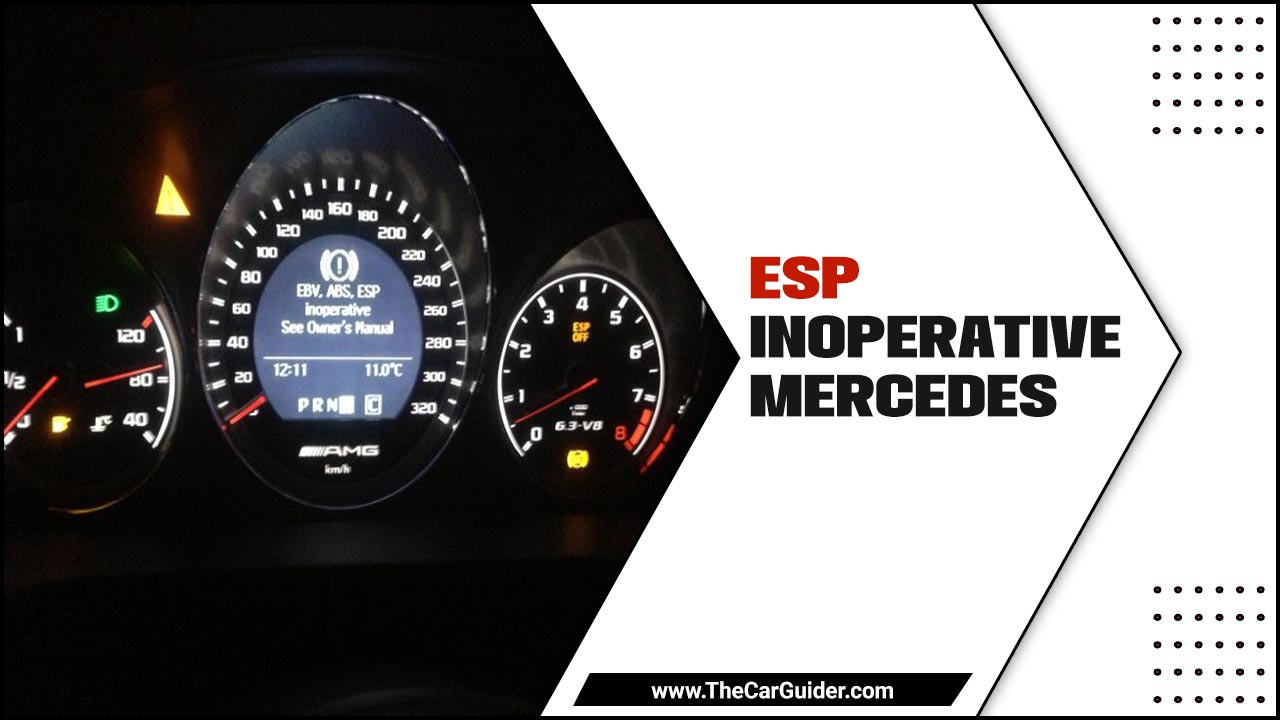
Key Takeaways:
- “ESP Inoperative” means the Electronic Stability Program is malfunctioning, impacting vehicle stability and safety.
- Common causes: misalignment, faulty sensors, or wiring issues.
- Driving with ESP off increases accident risk, especially in adverse conditions.
- Prompt repair is crucial for maintaining control and preventing accidents.
Understanding The ESP In Mercedes Vehicles
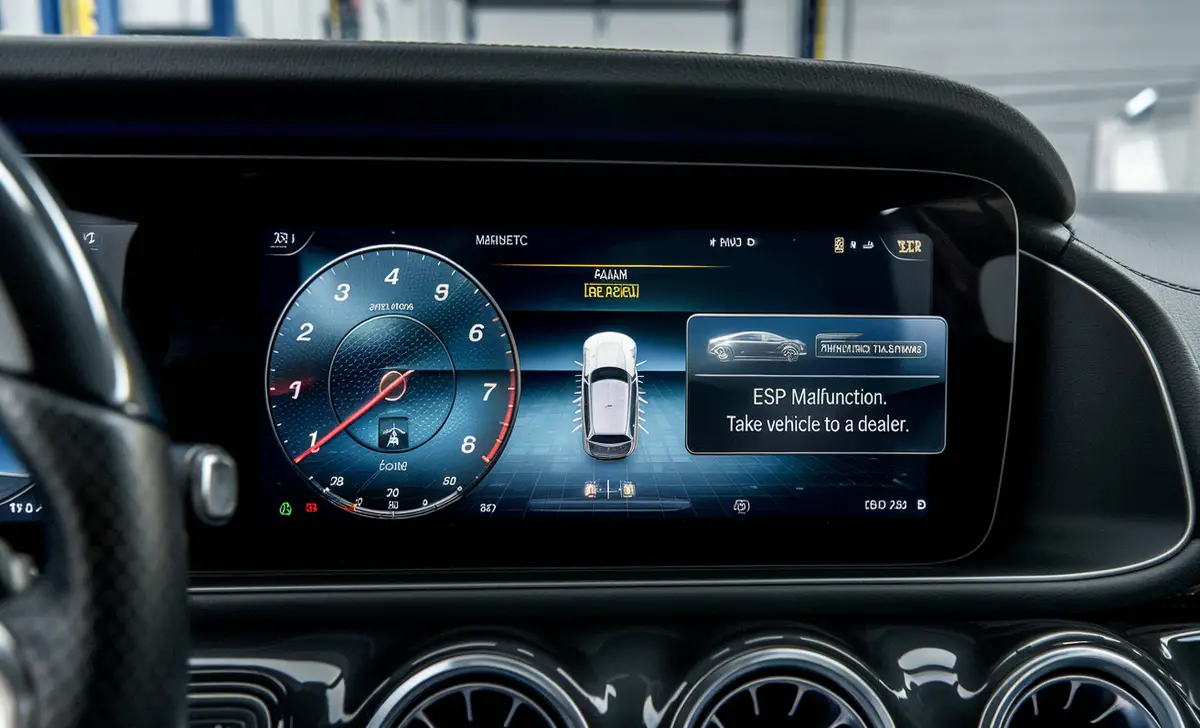
The Electronic Stability Program (ESP) is a crucial safety feature in Mercedes-Benz vehicles, and it is designed to enhance stability and control during driving. However, ESP malfunctions, indicated by warning lights or messages, can occur due to various reasons, such as wheel sensor or angle sensor issues.
The ESP malfunction may result in reduced traction control and stability assistance, potentially compromising vehicle safety. The absence of stability control (as in older vehicles or when ESP is disabled) can increase the likelihood of rollover accidents by up to 1.5 times compared to vehicles with ESP functioning. Addressing these issues promptly is essential to ensure optimal functionality and safety while driving.
Common Causes Of ESP Malfunctions In Mercedes Cars
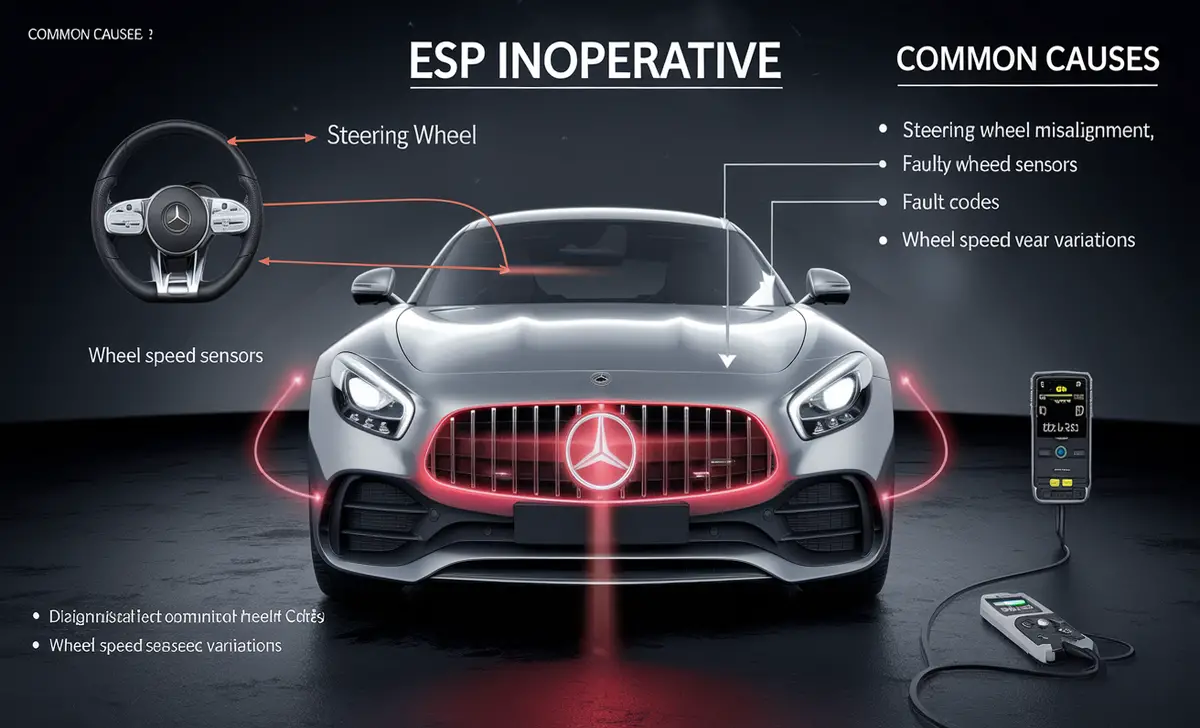
Experiencing an “ESP Inoperative” message in your Mercedes Benz can be concerning, but several issues may trigger this warning. The top culprits are problems with the steering wheel, wheel speed sensors, and fault codes. Understanding these potential causes can help diagnose and resolve ESP malfunctions effectively.
Common Causes:
- Steering Wheel Misalignment: Misalignment can disrupt the communication between the steering angle sensor and the ESP system.
- Faulty Wheel Speed Sensors: Damaged or dirty wheel speed sensors may provide inaccurate data to the ESP system, triggering warnings.
- Fault Codes: Check for stored fault codes using a diagnostic tool to identify specific ESP system issues.
- Wheel Speed Variations: Discrepancies in wheel speed readings can confuse the ESP system, leading to malfunctions.
Addressing these common causes promptly can help restore the proper functionality of the ESP system in your Mercedes.
Effects Of Driving With ESP Inoperative

Driving a Mercedes with the ESP inoperative, you may notice several effects related to your steering wheel, ABS light, and fault codes.
The steering wheel may feel less responsive or loose, indicating a potential issue with the wheel speed sensor. Additionally, the ABS light on your dashboard may illuminate, signaling that there could be a problem with the wheel speed sensors or the system itself.
Addressing these warning signs promptly is crucial to avoid compromising your vehicle’s safety and performance. Suppose you encounter fault codes related to wheel speed sensors or ABS components.
In that case, it is advisable to consult a qualified mechanic or authorized service centre to diagnose and resolve the underlying problem efficiently. Ignoring these issues can lead to unsafe driving conditions and further damage to your Mercedes’ systems.
Importance Of Addressing ESP Issues Promptly For Safety Reasons
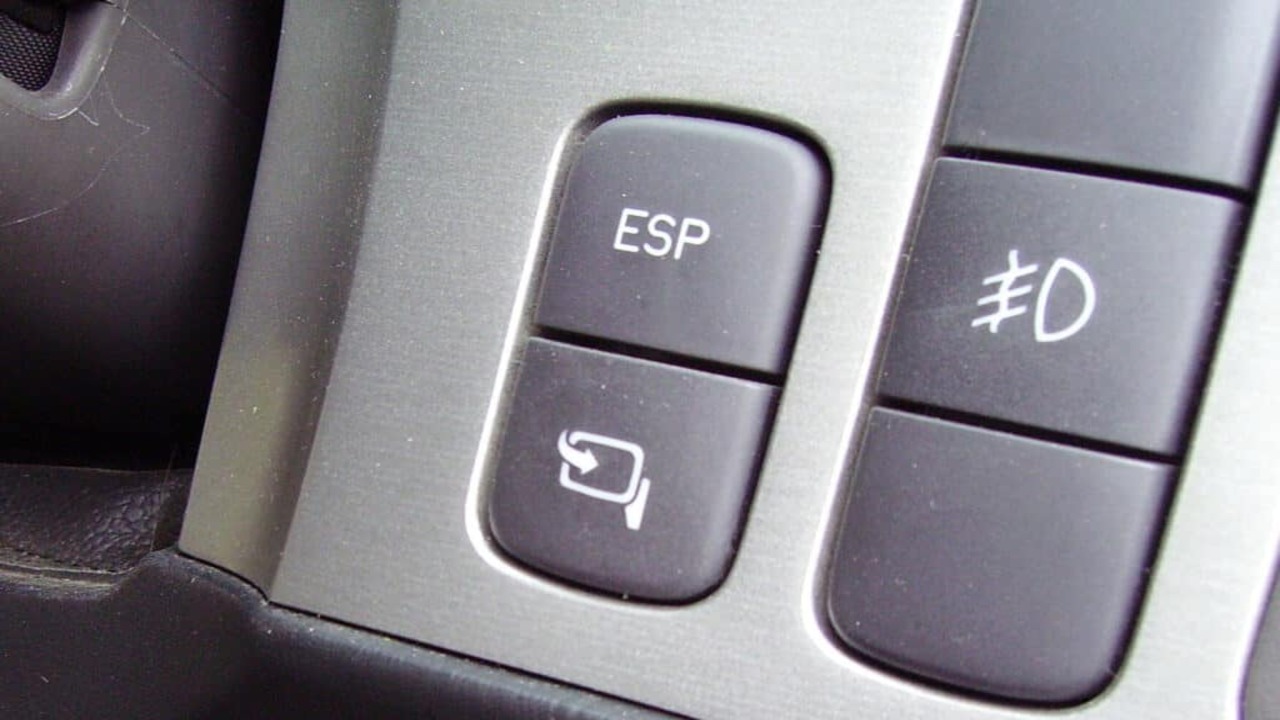
- Ensure vehicle stability
- Prevent the loss of control
- Enhance safety during maneuvers
- Maintain traction in adverse conditions
- Prevent rollovers and accidents
Multiple studies show that ESP reduces the risk of accidents by helping to prevent skidding or loss of control. One widely cited statistic is that ESP can reduce fatal accidents by up to 25% and loss-of-control accidents by as much as 40%.
Critical Components Of ESP System
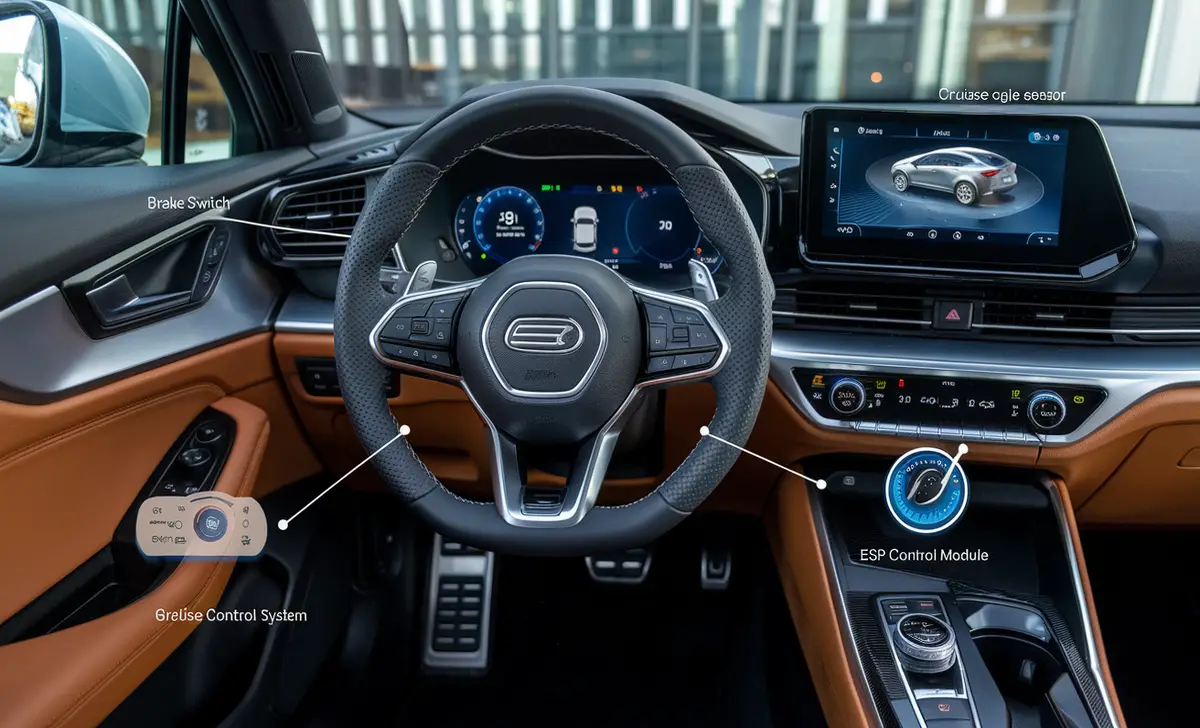
- Brake Switch: A malfunctioning brake switch can affect the ESP’s ability to engage properly, as it relies on accurate braking input.
- Steering Angle Sensor: This sensor provides critical data on the steering wheel position, helping the ESP system maintain vehicle stability.
- Cruise Control: ESP issues can disrupt cruise control functionality, impacting your ability to maintain a consistent speed safely.
- ESP Control Module: Faults in the control module can lead to incorrect processing of stability control data.
- Brake Pedal: The brake pedal’s proper functioning is essential for the ESP system to apply brakes to individual wheels as needed.
Steps To Take When The ESP Warning Light Comes On
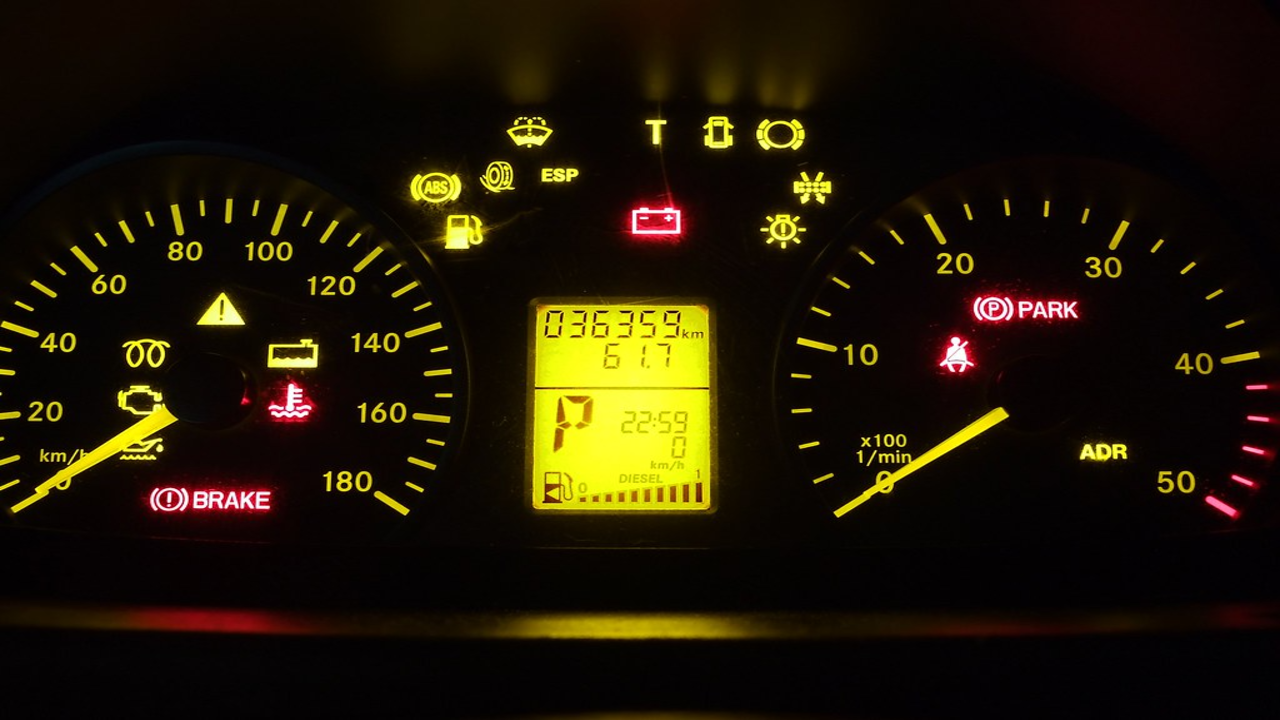
When the ESP warning light comes on in your Mercedes, it’s important to address the issue promptly to ensure your vehicle’s safety and performance. The ESP system helps maintain control during skids or slippery conditions, so any malfunction needs immediate attention.
Steps to Take:
- Check the Warning Message: Attention to the specific warning message displayed on your dashboard. This can provide initial clues about the issue.
- Turn Off and Restart: Sometimes, turning off and restarting the car can reset the ESP system, clearing minor glitches.
- Inspect Wheel Alignment: Poor wheel alignment can affect the ESP system. Check for any signs of misalignment or unusual tire wear.
- Examine the Steering Column: Ensure the steering column functions correctly, as issues here can impact the ESP sensors.
- Shift Gear: Try shifting the gear to see if the warning light persists. Sometimes, shifting to neutral and back can reset the system.
- Check for Time-Sensitive Errors: Some issues may resolve themselves after the car has been turned off for a period of time.
- Professional Diagnostic: If the warning light remains on, take your car to a certified Mercedes-Benz technician. They can run a diagnostic to identify and fix fault codes related to the ESP system.
Seek Professional Help For Malfunctions

If your Mercedes displays an “ESP Inoperative” message, seeking professional help to diagnose and repair the issue is crucial. While car enthusiasts might try basic troubleshooting, persistent ESP messages often indicate underlying problems that require expert attention.
A qualified mechanic can use specialized diagnostic tools to read fault codes, inspect the brake light system, and check critical components like wheel speed and steering angle sensors.
Safety Precautions To Follow When Driving With An Inoperative ESP System

Driving with an inoperative ESP system in your Mercedes Benz requires extra caution to ensure safety. ESP helps maintain control, and its malfunction can pose trouble, especially in adverse conditions.
Safety Precautions:
- Drive Slowly: Reduce your speed to maintain control without the aid of ESP.
- Avoid Sharp Turns: Be cautious with sudden maneuvers, as braking force distribution may be compromised.
- Maintain Safe Distance: Increase the distance between your vehicle and others to allow more reaction time.
- Check Limp Mode: If your car enters limp mode, it limits power and protects the engine. Follow its restrictions.
- Troubleshooting: Before seeking professional help, perform basic troubleshooting, such as checking for loose connections or faults in the wheel speed sensors.
Conclusion
If you drive a Mercedes and experience the ESP Inoperative Mercedes issue, it’s important to understand the underlying causes and take immediate action. ESP is a crucial safety feature in your vehicle, and its malfunction can put you at risk on the road.
Inoperative ESP in vehicles like those made by Mercedes-Benz can significantly reduce safety, particularly in challenging driving conditions. When the system is not active, drivers lose the benefit of the system’s automatic corrective actions, which can lead to increased risk of loss of control, skidding, or more severe accidents.
Diagnosing the issue using diagnostic tools and software, checking for error codes, and conducting physical inspections allows you to pinpoint the problem and find the appropriate solution.
Frequently Asked Questions
1.How Do You Reset The ESP Inoperative On A Mercedes?
To reset the ESP inoperative warning on a Mercedes, start by turning off the engine and removing the key from the ignition. Wait for a few minutes before restarting the car. If the warning persists, it’s best to seek professional help from a mechanic or dealership for further diagnosis and repair.
2.What Causes ESP Failure?
Some common causes of ESP failure in Mercedes vehicles include sensor or control module malfunctions, worn-out brake pads or tires, and corrosion on the wiring or connectors. Regular maintenance and inspections can help prevent ESP failure and address issues early on.
3.Is It Safe To Drive With ESP Light On?
Driving with the ESP light on is unsafe as it indicates a fault in the electronic stability control system. The ESP system ensures control and stability while driving, so it’s important to have it checked by a certified mechanic to ensure safety on the road.
4.What Does The ESP Button Mean On A Mercedes?
The ESP button on a Mercedes refers to the Electronic Stability Program. This safety feature helps to stabilize the vehicle and prevent skidding. By pressing the ESP button, drivers can easily turn the feature on or off based on their driving needs.
5.What Does Mercedes’s “ESP Inoperative” Fault Mean?
A Mercedes’s “ESP Inoperative” fault indicates that the Electronic Stability Program is malfunctioning. This safety feature helps maintain vehicle stability and control. A malfunctioning sensor or component could be the cause. It is advisable to seek assistance from a certified mechanic for diagnosis and repair.
6.Does Your Mercedes Say Abs ESP Inoperative?
If your Mercedes displays “ABS ESP inoperative,” there is a fault in both the Anti-lock Braking System (ABS) and the ESP, affecting your vehicle’s safety systems
7.C300 ESP Message Inoperative Is There A Fuse That May Be Out, And Where Is It Located?
Yes, a blown fuse can cause an inoperative ESP message. Check the fuse box under the dashboard or in the engine compartment. Refer to your owner’s manual for the exact fuse location related to the ESP system.